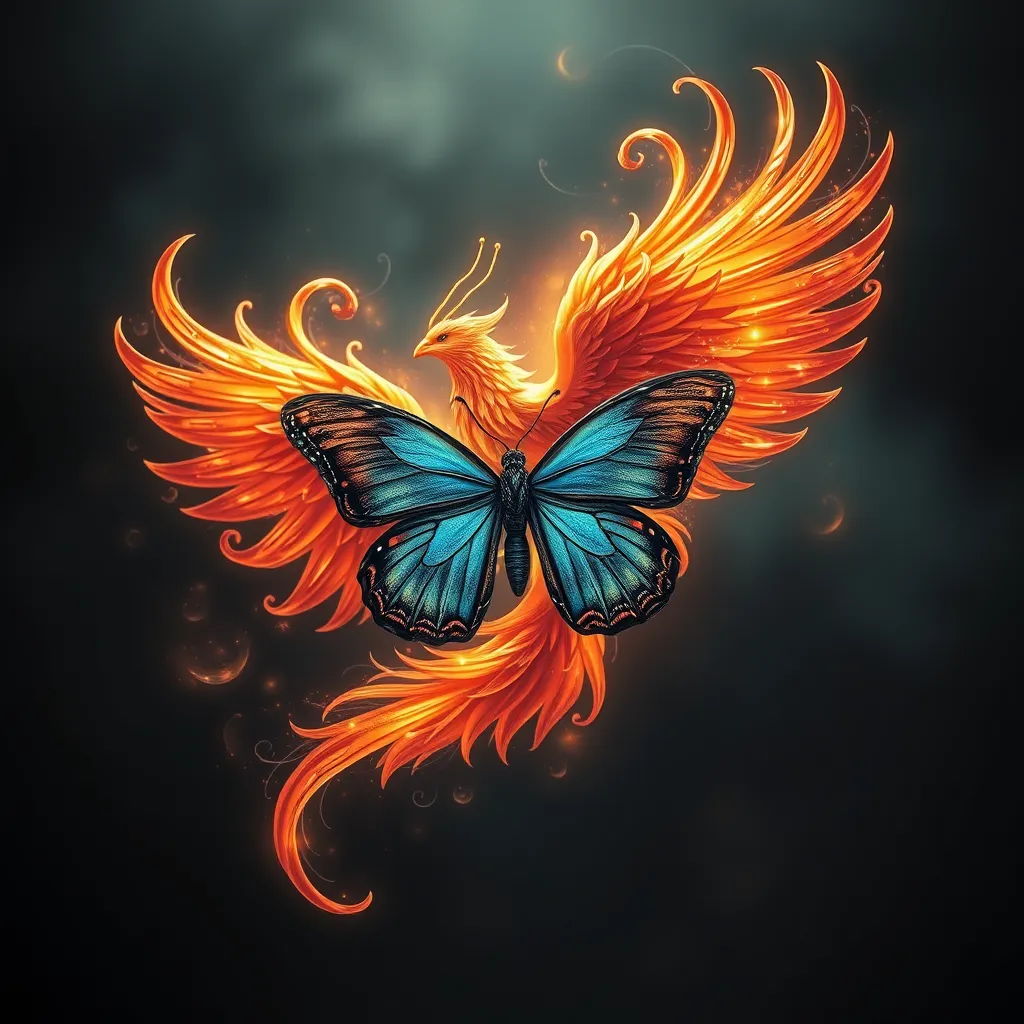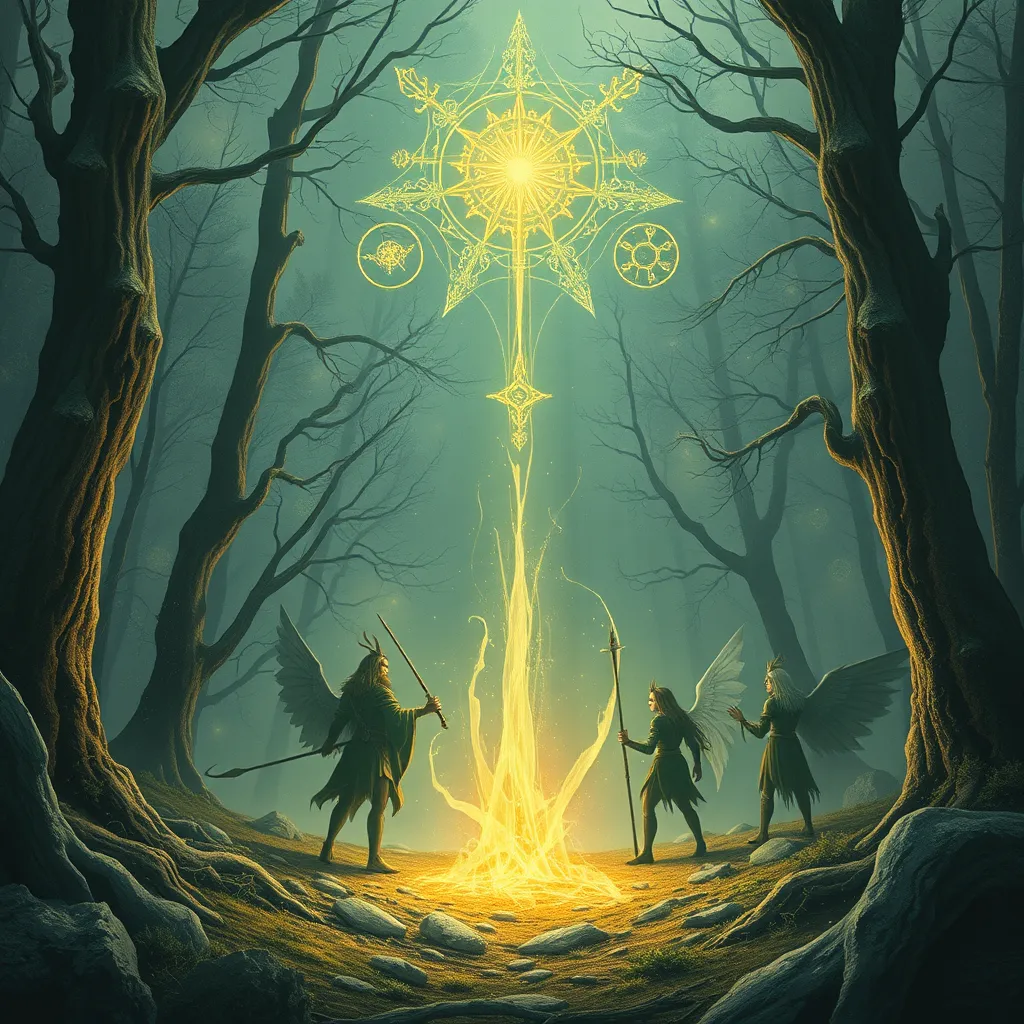The Phoenix and the Butterfly: The Symbol of Metamorphosis, Transformation, and Freedom
I. Introduction
Symbols play a vital role in culture and mythology, representing complex ideas and emotions in a form that is easily conveyed and understood. Among these symbols, the Phoenix and the Butterfly stand out as powerful representations of transformation, illustrating the journey from one state of being to another.
This article aims to explore the deeper meanings and connections between the Phoenix and the Butterfly, examining their roles as timeless symbols of metamorphosis, freedom, and personal growth.
II. The Myth of the Phoenix
The myth of the Phoenix traces its origins back to ancient civilizations, with roots in Egyptian, Greek, and Roman mythology. The Phoenix is often depicted as a magnificent bird that cyclically regenerates or is reborn from its ashes after dying in flames.
Central to the Phoenix narrative is the symbolism of death and rebirth, representing the idea that endings can lead to new beginnings. This cycle of destruction and renewal speaks to the resilience of the human spirit.
Cultural representations of the Phoenix vary across civilizations:
- Egyptian mythology: The Phoenix, known as the Bennu, was associated with the sun and creation.
- Greek mythology: Herodotus described the Phoenix as a solitary creature that lived for hundreds of years before self-immolation.
- Chinese culture: The Fenghuang, or Chinese Phoenix, symbolizes high virtue and grace.
III. The Life Cycle of the Butterfly
The butterfly undergoes a remarkable transformation through a process known as metamorphosis, which consists of four distinct stages: egg, larva (caterpillar), pupa (chrysalis), and adult butterfly.
Each stage carries its own symbolic meaning:
- Egg: Represents potential and new beginnings.
- Larva: Symbolizes growth, exploration, and the accumulation of experiences.
- Pupa: A time of reflection and transformation, where significant changes occur beneath the surface.
- Adult butterfly: Represents freedom, beauty, and the fruition of transformation.
As a universal symbol, the butterfly embodies the beauty of change and the importance of embracing life’s transitions.
IV. Parallels Between the Phoenix and the Butterfly
When comparing the Phoenix and the Butterfly, several themes of transformation emerge. Both symbols emphasize the importance of embracing change and the potential for rebirth.
Flight serves as a powerful metaphor for freedom in both symbols. Just as the Phoenix rises from the ashes, the butterfly emerges from its chrysalis, both representing liberation from past constraints.
These symbols provide valuable insights into personal growth and resilience, reminding us that transformation often arises from challenges and difficulties.
V. The Role of Adversity in Transformation
Adversity plays a crucial role in the metamorphosis of both the Phoenix and the Butterfly. For the Phoenix, the flames represent the trials that lead to rebirth. Similarly, the caterpillar must endure significant changes, often facing threats in its environment, before it can become a butterfly.
Psychological perspectives suggest that overcoming obstacles contributes to personal development and resilience. Challenges can foster growth and lead individuals to discover their true potential.
Inspirational stories of transformation often highlight this theme:
- Individuals who have overcome personal struggles, such as addiction or trauma, often report a profound sense of renewal.
- People who have faced career setbacks may find new paths that lead to greater fulfillment.
VI. Cultural Representations and Artistic Interpretations
The Phoenix and the Butterfly have been depicted in literature, art, and film, each medium capturing their transformative essence. From ancient texts to contemporary works, these symbols have inspired countless creative expressions:
- Literature: Classic and modern literature often features themes of rebirth and transformation, with characters symbolically linked to the Phoenix or Butterfly.
- Art: Artists use these symbols to convey messages of hope, resilience, and beauty in change.
- Film: Movies explore the journey of transformation, often portraying characters who rise from adversity akin to the Phoenix or undergo significant changes like a butterfly.
In contemporary society, these symbols remain relevant, serving as reminders of the potential for change and growth in our lives.
VII. The Power of Transformation in Personal Development
Embracing change and personal metamorphosis is essential for growth. Strategies for fostering transformation include:
- Setting specific goals and intentions.
- Practicing mindfulness and self-reflection.
- Seeking support from mentors or community.
Lessons learned from the Phoenix and the Butterfly highlight the importance of inner strength in overcoming challenges. The journey of transformation is not always easy, but it is often profoundly rewarding.
Freedom is a crucial element in the transformation process, allowing individuals to explore new possibilities and embrace their true selves.
VIII. Conclusion
In conclusion, the Phoenix and the Butterfly serve as powerful symbols of metamorphosis, transformation, and freedom. They remind us that change is an inherent part of life and that through adversity, we can find the strength to rise anew.
As we reflect on our own journeys, we are encouraged to embrace our metamorphosis, seeking the beauty and freedom that transformation offers. Let the stories of the Phoenix and the Butterfly inspire us to continue evolving and thriving in our lives.



